In Which Morgoth Gets His Ass Handed To Him, the Last Sons of Fëanor Find Time To Make One More Bad Decision, and Beleriand Starts Taking On Water
Well, we’re down to it at last. The final showdown of the First Age, which gets less page space than any of the Wars of Beleriand—and yet it’s the greatest conflict of them all. We’ve not seen this sort of mayhem since the Valar mopped the floor with Morgoth back when his library card still read “Melkor.” And that was arguably a more discreet event, since the Valar were then trying to shelter the newly awakened Elves!
The second half of Chapter 24 is a bit like the rushed ending of a really great novel—something even the best authors can be guilty of. But it’s not the ending of The Silmarillion, just the Quenta Silmarillion, the history of the First Age which centers around the Noldor and those pesky Silmarils. So let’s get right into it.
Dramatis personæ of note:
- Eönwë – Maia, Manwë’s right-hand man
- Eärendil – Half-Elf, star-studded dragonslayer
- Maedhros – Noldo, tragic one-handed son of Fëanor (eldest)
- Maglor – Noldo, hapless two-handed son of Fëanor (next eldest)
- Morgoth – Ex-Vala, World’s Greatest Asshole
- Sauron – Maia, Assistant to the World’s Greatest Asshole
Of the Voyage of Eärendil and the War of Wrath, Part 2
When last we looked, Eärendil had taken to the heavens on his ship, Vingilot, and now he carries a Silmaril around the world as a new star. Taken together, the Eärendil + Silmaril combo is called Gil-Estel by the Elves, which means Star of High Hope. (Note: millennia from now, a two-year-old Aragorn will be given the name Estel while his lineage was kept secret “until the proper time.”)
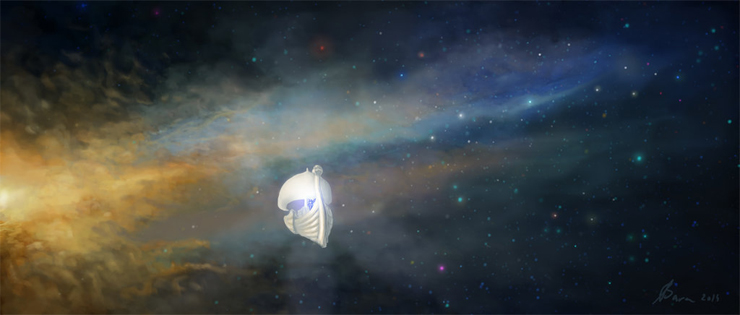
But now, spurred to action by Eärendil’s great voyage, the Valar are going on crusade! Morgoth’s crossed too many red lines, and they’re pissed—wrathful, even, and probably have been for a long time. The polite and courageous request of one of Ilúvatar’s own children was all they needed to let slip the Valinorean hounds of war.
The host of the Valar is thus borne across Belegaer, the Great Sea, in ships lent to them, and manned by, the Teleri. Thus the Vanyar, some Noldor, and a whole lotta Maiar storm the beaches of Beleriand where Morgoth presumes to reign. Now, the Teleri doing the actual marine work refuse to set foot on shore; instead, they hang back on their ships. Which seems fair. They still hold a grudge against the rebellious Noldor for what they did, and will go no further in helping to liberate those who remain. Plus, they have another reason to be wary: those arsonistic sons of Fëanor might still be lurking about.
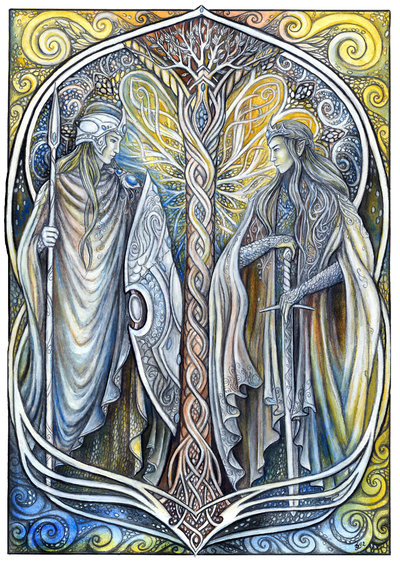
Now, it’s the Maiar and possibly some of the Valar who are the mysterious ones in this host, for we are told that they are now “arrayed in forms young and fair and terrible.” See, we know that only Ainur (i.e. Valar and Maiar) can alter their bodies and shapes in such ways. And the host of the Valar is not subtle, and so their forms are probably not small and Elven-soft. The mountains ring beneath their feet and all of Beleriand is “ablaze with the glory of their arms.” Wow. Are, like, a bunch of them assembling, Voltron-style, and advancing towards Angband like some great titan? Either way, I would so love to see the expressions on the faces of the first Orcs who caught sight of this host.
But what a wonderful invitation to imagine! Tolkien gives us very little to work with, in part because the chief storytellers of this time were the Elves of Beleriand, and they’re not at all involved in this war. They learn only after the fact about how things went down. So that means we as readers are left with questions like:
- Is Eönwë, “whose might in arms in surpassed by none in Arda,” some kind of giant-sized knight?
- Are there Maiar of Yavanna who march out like colossal animals? Some sort of Tolkien-style kaiju? That would be boss.
- How luminous and awesome would the elite of Varda, Lady of the Stars, be?
- Does Tulkas send a brute squad, like a gang of pro-wrestlers who favor brawn over brain in the field of combat? Or is he the brute squad?
- Is Oromë getting in on the action? There’s no way his hunters and hounds aren’t here. And who knows, maybe the spirit of Huan leads them once again!
- Are there other good spirits of fire here, counterparts to the Balrogs (like Arien, the maiden who took up the task of bearing the Sun on its celestial course)?
- What form would warriors of Vairë the Weaver take? How badass would they be with their nets and spears? Do Mandos’s servants dish out bardic recitations?
- Are there earth elemental-style Maiar who serve Aulë, or am I just unable to turn off my D&D sensibilities?
Buy the Book
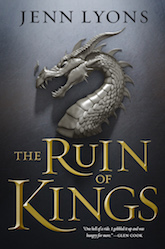

The Ruin of Kings
Whatever it really looks like, what follows is the War of Wrath—and because it’s covered so succinctly in the text, it’s easy to assume that it’s fast and fierce. But it’s more likely a long and protracted conflict. This is truly a war, not a battle. According to The War of the Jewels (vol XI of the History of Middle-earth) we learn that the host of the West reaches Beleriand in the year 545 of the First Age, yet the war doesn’t conclude until roughly forty-five years later. Now recall that these combatants are among the mightiest beings in the world…it’s no wonder Beleriand gets so torn up.
The Valar do not wage war lightly. They cannot afford to; the resultant devastation is much too great. Even if a representative of the Two Kindreds had gotten a hold of a Silmaril much earlier—like, say, before the fall of Nargothrond—and made it to Aman to entreat the Valar for aid, I don’t think they’d have taken action right away. At least, not like this. There were too many Elves and Men scattered about the lands then; too many towers and fortresses—too many communities. Too many lives of the Children of Ilúvatar at stake, and the Valar do not forget for whom Arda was made in the first place.
To say nothing of the devastation to the flora and fauna—possibly some mass extinctions—which are sure to follow. How bummed must Yavanna be about what’s coming? Although she always wanted to go after Morgoth, the natural world has really flourished since the rising of the Sun. I’m betting she’s the last of the Valar to consent to this Great War.
Morgoth responds with a terrifyingly large force of his own. It’s a bit ironic, actually. He himself is the physically weakest he’s ever been, since he’s spent so much of his Vala-born power in marring the world and inflating his monsters. Yet because he has done so, and because he’s been uncontested for decades now, his armies have never been stronger. Just how numerous have they become? Well, beyond count:
There was marshalled the whole power of the Throne of Morgoth, and it had become great beyond count, so that Anfauglith could not contain it; and all the North was aflame with war.
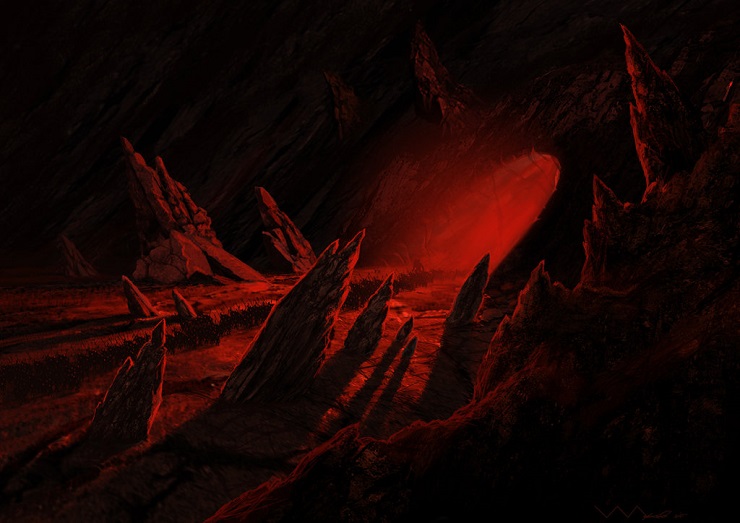
See that? The vast plain of Gasping Dust, where the Nirnaeth Arnoediad was principally fought, isn’t a big enough field to even temporarily hold his forces. How deep Angband is—or how vast the tunnels beneath the Iron Mountains must be—that his Orcs and wolves and werewolves and vampires and trolls and Balrogs can’t even fit onto his very prodigious front lawn! These forces have only multiplied, it seems, since he took over the North. So we’re talking huge armies, even more massive than those involved in the Battle of Unnumbered Tears or the Battle of Sudden Flame.
But now the skies resound with the trumpets of Eönwë, who, as the herald of Manwë and the master of arms, is essentially the general of this invading force. He likely has his own kick-ass marching band wherein seventy-six trumpets lead the big parade way and, I guess, Valinorean-style sousaphones brings up the rear? Followed then by a host of warriors.
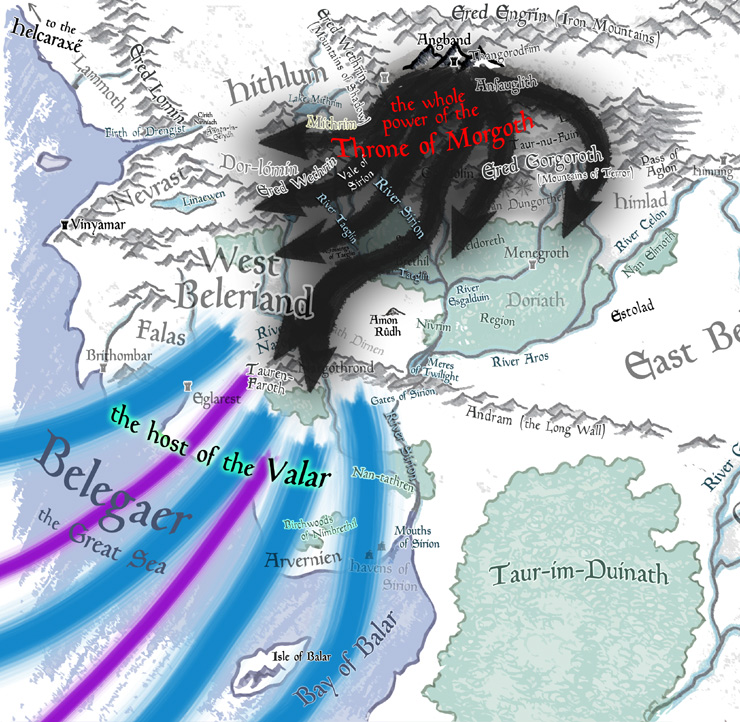
You know who’s not in this war? The Elves of Middle-earth, which includes the Noldor, the scattered Sindar, or even the Green-elves of Ossiriand. Not a one. Cowed by all their defeats, they’re sitting this one out. Also not taking any official part in this war are the Dwarves of the Blue Mountains (though they will be impacted, as we’ll see soon).
But guess who does join up with the host of the Valar? Men! You know, those measly Secondborn Children of Ilúvatar: the Sickly, the Usurpers, the Strangers, the Followers. To be fair, we’re talking about only the last remnants of the Edain, the three houses of Elf-friends (Bëor, Hador, and Haleth). But still, good on them! Their valor has always been lauded. And anyway, at this point, what have they got to lose? Their lives? Death is an escape from the hurts of the world, and from Morgoth’s reach.
That said, Easterlings join in the fighting as well, and they’re backing the very wrong horse. We’re talking about the people of Uldor (son of the treacherous Ulfast), who may or may not include the Easterlings that were “rewarded” with the occupation of Hithlum. But also other Men from east of the Blue Mountains come streaming over, likewise siding with Morgoth, “and the Elves do not forget it.”
Now, this clash of armies is so colossal and epic that we get…welp, pretty much nothing. Except for the bottom line, which doesn’t look good for Morgoth. Again, try and remember this isn’t just some skirmish on a bigger scale; it stretches on for years—decades!—no doubt involving prolonged campaigns, risky strategies, and setbacks on both sides. Think the Crusades meets World War I…and II, for that matter.
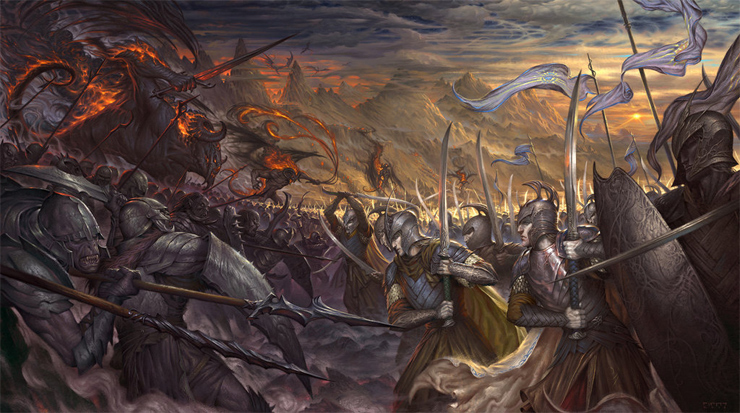
So how do Morgoth’s armies fare? Well, we’ve never seen his armies so deliciously defeated as described in this prose:
The Balrogs were destroyed, save some few that fled and hid themselves in caves inaccessible at the roots of the earth; and the uncounted legions of the Orcs perished like straw in a great fire, or were swept like shrivelled leaves before a burning wind.
Ohhhh snap!
So, all right, a trifling number of Balrogs seem to have gotten away, but they’ve gone underground now—but not back into Angband, instead finding super-deep places to hide out. As long as no one delves too greedily and too deep elsewhere in Middle-earth, I don’t think anyone needs to worry about these guys again. And the Orcs? They’re donezo, at least for a good long time.
At this point, Morgoth is given pause. He sees the Tengwar writing on the wall. The Valar are coming for him at last; it turns out Manwë wasn’t just going to let the depredations of half a millennium slide. Back in the days of Utumno, Morgoth was a force to be reckoned with. He was not so diminished from his Ainulindalë days, when he was “clad in ice and crowned with smoke and fire,” and it took the combined efforts of the Valar to simply apprehend him.
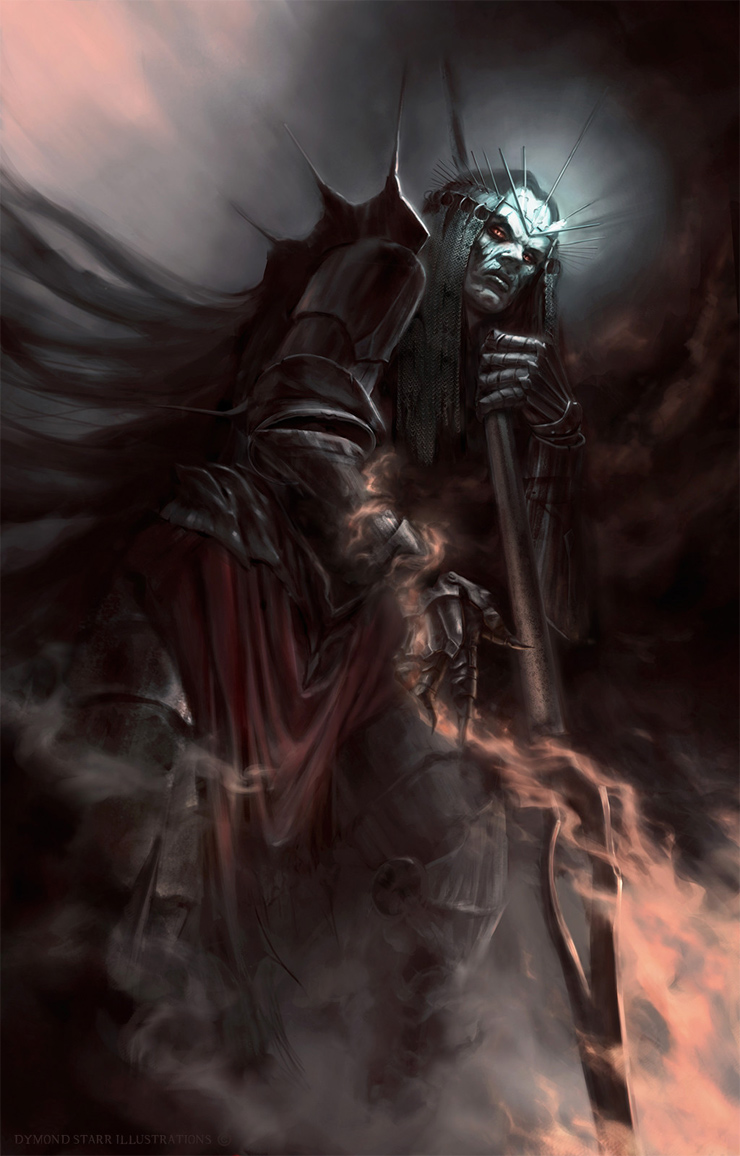
But now? No way can he stand up to Eönwë and his lionhearted forces in the flesh. Therefore he plays his final card, hoping it’s a real ace in the hole. If by “hole” we mean the voluminous pits of Angband, and by “ace” we mean dragons. Winged goddamn dragons! Fresh out of Morgoth’s R&D.
So off these flying fire-drakes go, to take on the host of the Valar.
Now, I do admittedly have a couple of questions myself: Were these winged dragons field-tested in the Iron Mountains first, or did they somehow have sufficient flyspace in deep caverns? And what harm would it have been to release the flying dragons earlier? Maybe they’re too testy, and too hungry. Maybe they’d eat and burn up too many Orcs if both forces were loosed in tandem? Maybe the dragons aren’t necessarily as loyal as their old granddaddy, Glaurung, had been?
See, even if Gondolin had lasted for some years more, once the Dark Lord got these winged dragons out and about, they’d have spotted the Hidden City in no time. Eagles be damned. Still, Morgoth’s dragon gambit in the War of Wrath pays off for a while.
…and so sudden and ruinous was the onset of that dreadful fleet that the host of the Valar was driven back, for the coming of the dragons was with great thunder, and lightning, and a tempest of fire.
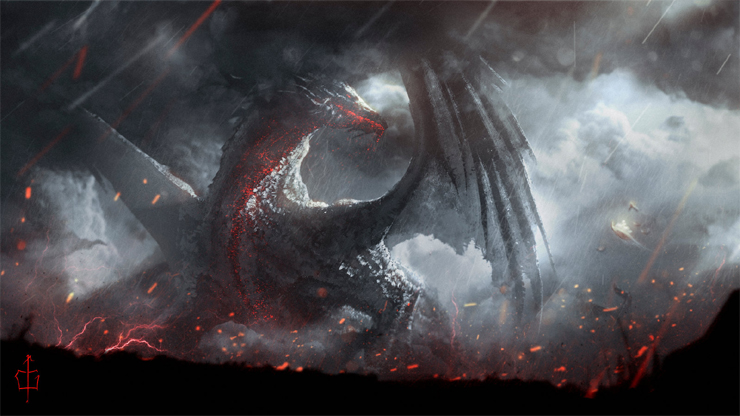
For some perspective on this: Remember when it was just Glaurung and a few of his wingless runts? Even Calaquendi Elves couldn’t withstand him! Only the Aulë-wrought Dwarves with their hardy skins and hardier battle masks were able to square off against them. But this new batch? There’s a freakin’ fleet now, and they’re all flying. The invading host can’t stave these fire-drakes off completely. Sure, no doubt plenty of Maiar can face their mettle, but dragons are the work of Arda’s formerly most powerful dweller. Morgoth himself might be much weaker than he was in his heyday, but his monsters are jacked up.
We’re also introduced oh-so-briefly to the mightiest of these dragons and probably the physically largest: Ancalagon the Black! We really only get this one moment with him, sadly, but he must feature into some stories that get passed down through the ages, since Gandalf brings him up like he’s a household name when telling Frodo about how the One Ring is impervious even to dragon-fire. Not even Ancalagon the Black, the wizard points out, would have been able to destroy this ring! So this drake’s breath must be truly toasty.
Anyway, these dragons might account for some of the years that go by, while the host of the Valar contend with them. They’re Morgoth’s big guns. But eventually the armies of the West do rally and retaliate, and more important, they finally get some air support.
Support, you might say, unlooked for that cometh at unawares!

Because this is when Eärendil the mariner swooshes in, apparently taking a break from circumnavigating the world outside the Door of Night. From the deck of a white-gleaming, star-blazing Vingilot, he flies down into the fray but never touches down: Eärendil honors Manwë’s ruling that he cannot return to Middle-earth. Floating above it is a convenient loophole, (though rules-lawyer Mandos must surely disapprove).
Accompanying Eärendil are “all the birds of heaven”—that is, all of Manwë’s special ops. That’s right, the Eagles are coming! Of course, they’re led by none other than old Thirty-Fathom Thorondor, who we may all remember from such marrings as Morgoth’s face and such Elf-corpse retrievals as Fingolfin’s and Glorfindel’s.
And as the Eagles take on the dragons (feathers vs. leathers!), we’re given a solid measure of time, as the whirling and battling of these combatants lasts for a single “day and a night of doubt.”
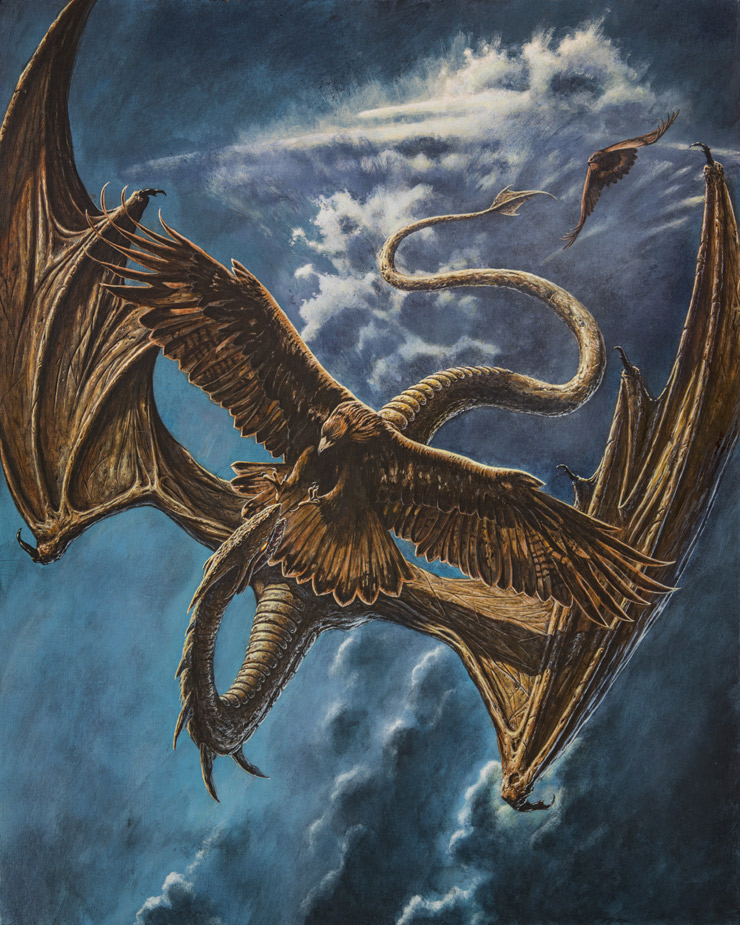
It culminates just before the rising of the Sun the next morning. Normally this is when folks would see the morning star in the sky—but right now it’s beaming out from Eärendil’s brow, and he’s way too busy battling the greatest dragon ever, thank you very much.
Eärendil does prevail, slaying Ancalagon the Black. We’re not sure how—it really doesn’t matter, as any detailed description of this amazing battle could fall short of its mythic power—but I have to think our hero is clad in the chainmail armor and rune-scored shield mentioned in Bilbo’s song. His dragon-horn bow launches arrows of ebony, his “sword of steel” is valiant, and let’s not forget the Silmaril strapped to his head which is sure to boost his every attack and damage roll against creatures of Morgoth.
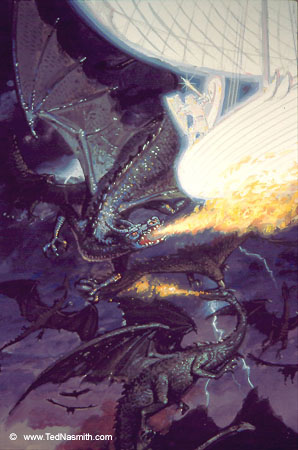
Anyway…
Ancalagon is eventually thrown down from the sky, right on top of the ginormous, slag-based baking soda volcano that Morgoth named Thangorodrim. These three monstrous peaks have endured as the metonymic symbol of the Dark Lord’s menace for a loooong time. They were the very towers of dread that Fëanor himself looked upon in his dying moments only to realize that the full might of the Noldor would never overcome them. But now, by the initiative of the Valar, the hope of the West, and the mariner most renowned, a very large dragon has been cast upon these towers and they break under the force.
Most of the dragons are slain, but of course, some do live on to breed another day. I mean, some future mama dragon is going to have to birth baby Smaug someday, right? The Lonely Mountain and the vast treasures of Erebor aren’t going to conquer themselves in the Third Age!
So this just leaves the head honcho himself. The Big Cheese of Evil. The OG Dark Lord.
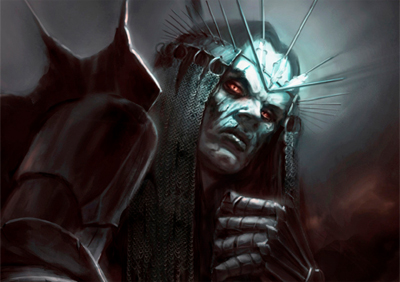
Eönwë and his host overtake the now unguarded Angband, unbattening all the hatches and tearing off its roofs. Pits are exposed and all monstrous guardians (if there are even any left) are routed and slain. Morgoth himself is now cornered in his dungeons, defeated. The text tells us “the might of the Valar descended into the deeps of the earth,” which to me really does imply that at least some of the Valar themselves are here—as they were the last time they came down and ripped the black sheep of the Valar out of his hidey-hole.
Like a bully who’s finally been stood up to, Morgoth abases himself, asking for “peace and pardon.” Like, hey, I was only kidding! Can’t you all take a joke? Well, his feet are “hewed from under him,” so he’s laid low by warriors probably smaller than he—likely some valiant Vanyar or Noldor. Then he’s thrown down right onto his freakin’ face, and…I’m sorry, but I have to think Tulkas is on the scene for this. He’s been dreaming of this moment for a long time, no question. Morgoth is no match for him—not even close, especially now that he’s squandered so much of his strength in polluting the world.
In the very least, I like to think there are a series of punches from Tulkas the Strong. “This [*punch*] is for Telperion, and this [*punch*] is for Laurelin. This [*punch*] is for Finwë, and [*punch*] Fingolfin, and this [*punch*] is for stringing along Fëanor and ruining him, and this [*punch*] is for the way you looked at Nessa that one time, and maybe this [*punch*] for ogling Lúthien. And this [*punch*] is for…” The list in my head is long but distinguished.
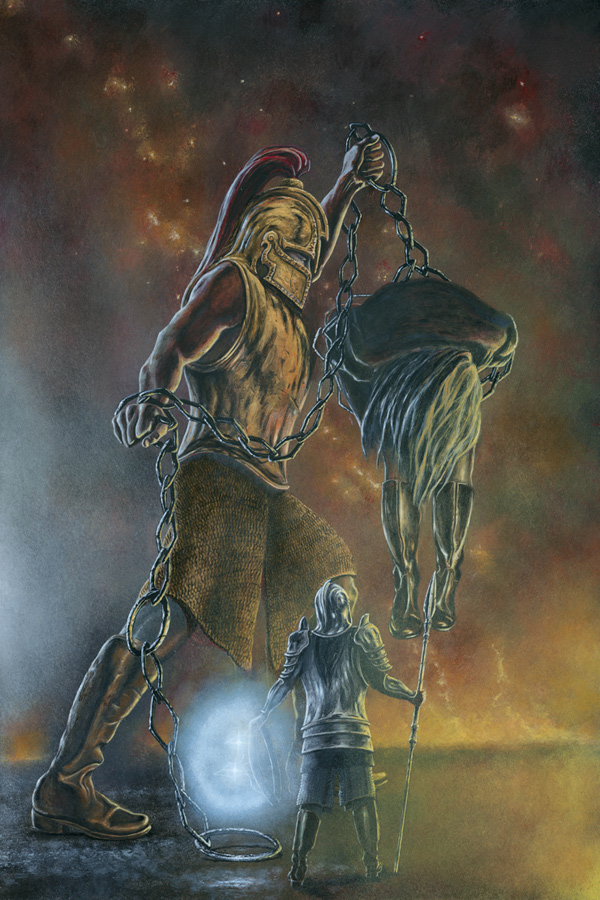
At some point, out comes Angainor, that big chain he wore once back in the day, when the Valar had some shred of patience for him yet.
and his iron crown they beat into a collar for his neck, and his head was bowed upon his knees.
Such an evocative image, and such a symbolic one! So you’re King of the World, eh? Nice crown you got there, asshole; but we think it would look better around your traitorous neck! Yes, of course, all the Valar are too classy to say anything like that (but Tulkas is definitely thinkin’ it). Given that Aulë himself had fashioned the chain Angainor, I wonder if he or at least some of his Maiar are the ones to repurpose Morgoth’s crown and hammer it into its new form, probably right there in the sub-basement of Angband. Bonus points if Angband is now so thoroughly ruined that the Sun comes beaming down on him, just to add further injury.
Either way, Morgoth is then dragged away. But we haven’t quite seen the last of him. Sit tight.
What’s also really cool, but very easy to overlook, is the fact that at this point “a multitude of slaves” is released from Morgoth’s prisons. We’ve seen this sort of thing before, such as when Lúthien freed the slaves at Tol-in-Gaurhoth, Sauron’s Isle of Werewolves. But this is Angband and the numbers are much greater. This motherlode of ex-captives could be a whole bunch of Noldor, Sindar, and Men of all stripes who have heretofore been unaccounted for—and therefore might well represent more of the people, or the ancestors of the people, who live on in future ages.
And at long last, after some six hundred years or so, the Silmarils are reclaimed! Well, two of them. That third one is still stuck to Eärendil’s head, and it’s going to keep on encircling the world with him till the world is remade. So Eönwë takes charge of these two jewels of Fëanor, and he sets a guard on them in his camp until such time as they’re shipped back to Valinor. There are many possibilities for the Silmarils now. They can be placed somewhere for all to view and enjoy, or maybe—just maybe—they Valar will find a way (sans Fëanor) to “unlock” them and allow Yavanna to rekindle the Two Trees or something amazeballs like that.
But we need to talk about the destruction of Beleriand and its realms, which has been hinted at and voiced more than a few times throughout the book. By the time of the final confrontation with Morgoth, the land had already begun to change. To…well…sink.
For so great was the fury of those adversaries that the northern regions of the western world were rent asunder, and the sea roared in through many chasms, and there was confusion and great noise; and rivers perished or found new paths, and the valleys were upheaved and the hills trod down; and Sirion was no more.

So, two things about this.
One, “so great was the fury of those adversaries” sure sounds like some actual Valar were battling Morgoth’s forces in person (though no, it’s not definitive, and it’s likely not all of them). Recall that when the Valar had punched their way into Morgoth’s old fortress of Utumno thousands of years ago, they rocked the land dramatically enough that the Elves at Cuiviénen felt it in the earth beneath them and heard the clamor from afar. The Great Sea expanded, pushing Aman and Middle-earth further apart. Yet even back then the Valar hadn’t wrecked as massive a piece of the continent as they have now in the War of Wrath. Maiar can be mighty, but this feels like the combined firepower of some heavy-handed Valar as well.
Two, the sinking of Beleriand isn’t happening overnight. Though most of it will fall under the waves entirely, it takes time for the rivers and seas to wash over the land. It’s not like the slaves freed in Angband come walking out and find themselves scrambling for lifeboats. Beleriand’s changing, but it’s not gone yet. And in the events that follow below, there is obviously still some land left to walk around on for a while. But I do think it’s safe to say that all Elves and Men are forced to shuffle around—or more likely, be shuffled around by Valinorean ushers—during this time. This chapter is so concise that we have to connect some dots ourselves.
Oh, wait. Here’s a third thing that no one really talks about. Going back to that passage…
and Sirion was no more.
Yes, this is all a great calamity to many—Ainur, immortals, and mortals alike—watching Beleriand swallowed up like this. I can’t help but think that Aulë and Yavanna would find the loss especially sorrowful. Aulë was aggrieved the last time the Vala battled Melkor, knowing how much it would harm the earth. And now? All those wonderful mountains and caves and valleys and tors and ravines and hills…they’re all just collapsing and going under. And Yavanna! She has so many of her creatures living in these lands, innumerable plants and animals—possibly whole species!—surely wiped out. The Ents, as we learn from Treebeard later, have moved eastward, at least.
But see, Sirion itself gets called out in the text where other rivers do not. We know Ulmo must be bummed. This was his favorite river! (With Gelion a close second.) The mighty Sirion was his buddy; through it he had aided the folks of Beleriand quite a few times: Turgon, Finrod, Húrin, Tuor, and on. Yes, water is water, and it all drains back to his oceans. But rivers, like all natural things, have an identity to the Valar…and to Tolkien. A moment of silence, then, for the drowned River Sirion.
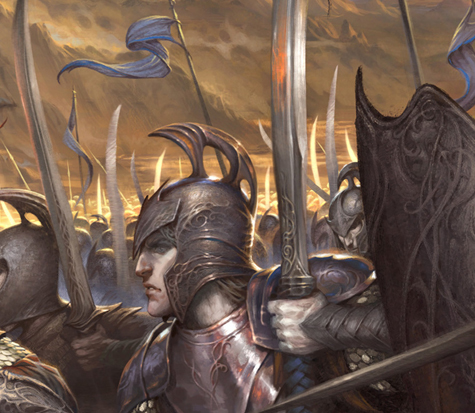
In the meantime, Eönwë is still in charge of what’s going on in Middle-earth. If any of the Valar had come out for the fighting, they’ve probably retreated now, steering clear of Middle-earth as much as possible for their own overarching reasons. And so it falls to Manwë’s agent to issue a new summons to the Elves of [the currently sinking] Beleriand: they can, perhaps even should, now depart from Middle-earth and go to Valinor. The time of the Elves is already waning anyway, and had been since the rising of the Sun.
But think of this as a soft summons, because the Firstborn are not so much ordered out of Middle-earth as shown the door. It’s a door, we will see for at least two long ages more, that will stay open and be manned by Círdan the Shipwright. But it’s only for Elves. Remember that. There will be a quiz.
Meanwhile, Maedhros and Maglor have found themselves in a truly sticky situation. Eönwë has the Silmarils, and he’s right here! And by their Oath, the must now go after him. They deliberate and grieve over it; neither of them actually wants to do it. Are there any loopholes they can exploit? Not really. And rather than going up to Eönwë himself in person, they send messengers to his camp as part of their ask-nicely-for-the-Silmarils-first policy.
Eönwë simply responds that NO, the Silmarils are not his to yield. Essentially, they’re exhibits A and B in the custody of the court of Valinor. Furthermore, his messengers respond, the sons of Fëanor have lost all rights to the Silmarils anyway. They might have had a legitimate claim before, but that’s all gone now, especially after all the horrendous things they’ve done in their name. The Silmarils are now set to return to Valinor, where they were made. Oh, and also: Maedhros and Maglor are hereby ordered to appear in Valinor and face the judgement of the Valar. The last remaining sons of Fëanor have been subpoenaed.
So here’s a question some might have in regards to the M-brothers, but could also be applied to other circumstances (such as Eärendil’s quest earlier in this chapter). The question is, why is there a need to go all the way to Valinor to ask for pardon or to face judgement? Why couldn’t Eärendil (or others) merely stand on the shores of Middle-earth and supplicate the gods from afar? Surely Manwë and Varda can see and hear.
And for Maedhros and Maglor in their situation, couldn’t Manwë have just handed out a judgement right here in Beleriand? Or might this be proof that that the Valar didn’t appear in the War of Wrath? Why would Eönwë direct the sons of Fëanor to first travel all the way back to Valinor in Manwë was already here? Can’t he just point and say “take it up with the big guy”? Well, for one, even if some of his brethren did come, Manwë himself almost certainly didn’t leave his halls atop Taniquetil, the Holy Mountain.
Tolkien addresses this sort of thing in Morgoth’s Ring (vol X of the History of Middle-earth):
He, like Melkor, practically never is seen or heard of outside or far away from his own halls and permanent residence. Why is this? For no very profound reason. The Government is always in Whitehall. King Arthur is usually in Camelot or Caerleon, and news and adventures come there and arise there. . . . Even to the final war against Morgoth it is [Eönwë] who leads out the power of the Valar. When we move out Manwë it will be the last battle, and the end of the World (or of ‘Arda Marred’) as the Eldar would say.
Simply put, that’s not how it is done in the great tales. To put it yet another way, here are similar words from Tolkien’s friend, C.S. Lewis, who in his book Mere Christianity could just as well be speaking of Manwë or Ilúvatar himself:
But I wonder whether people who ask God to interfere openly and directly in our world quite realise what it will be like when He does. When that happens, it is the end of the world. When the author walks on to the stage the play is over.
With this in mind, let’s return to the sons of Fëanor. Maglor tries to convince his big brother to just lay their Oath aside and trust the mercy of the Valar. Maybe Manwë and Varda, being King and Queen of all Arda, can straight-up void it for them? At least, he suggests, maybe they can let it rest for a while. The Oath never said they couldn’t procrastinate, and they’ve certainly done it before. But apparently their daddy issues win out, as does their fear of the cosmic power that Fëanor had invoked in making the Oath in the first place.
And so one last lamentable decision is made, and yet they know they’re in the wrong. The two brothers sneak into Eönwë’s camp, find the Silmaril’s guards, and slay them. Presumably these guards are other Elves, as even the sons of Fëanor would be no match for a couple of guardian Maiar. Then they flee, Silmarils in hand—each brother carries one. Holding the hallowed gems, it becomes clear that Eönwë was right: their claim to the Silmarils isn’t legit, for their “hands unclean” are scorched by them! Although the camp is roused at this murder and theft, Eönwë forbids pursuit. Maedhros and Maglor have made their decision and dug their own graves. Free will can be a bitch.
Maedhros suffers “pain unbearable” with his one hand. Remember, the other one was cut off on Thangorodrim long ago in a different time, back when he was trying to fight the good fight. And so great is his agony and despair that he finds a “gaping chasm filled with fire”…
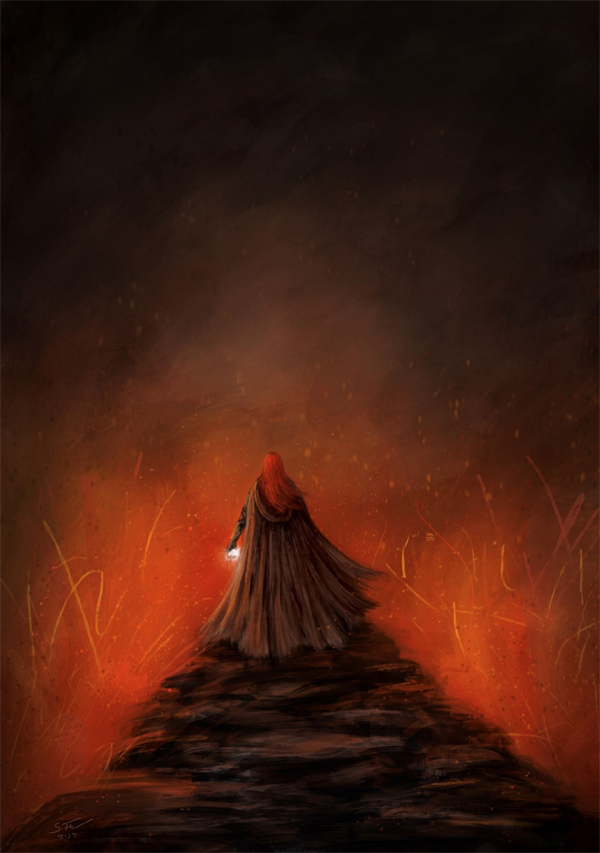
…which, with Beleriand crumbling apart, is probably not as hard to find as it used to be.
He throws himself down with the Silmaril…
That’s right. Here we are at the end of an age, and a mighty objet d’art falls along with its bearer into a fiery crack of doom. Sure, sure, Maedhros had once hung in torment, facing certain death, from the side of a mountain of terror and against all hope made it back alive. Alas, there’s no coming back from this one. If you don’t believe me, ask Gollum.
Now Maglor, having just lost his big brother, is no less tormented by his burden. He is, after all, the most self-flagellating of the sons of Fëanor. He knows he deserves punishment. But instead of throwing himself into a pit to his death, he simply runs up to the edge of the land and casts the Silmaril into the Sea. Good riddance!
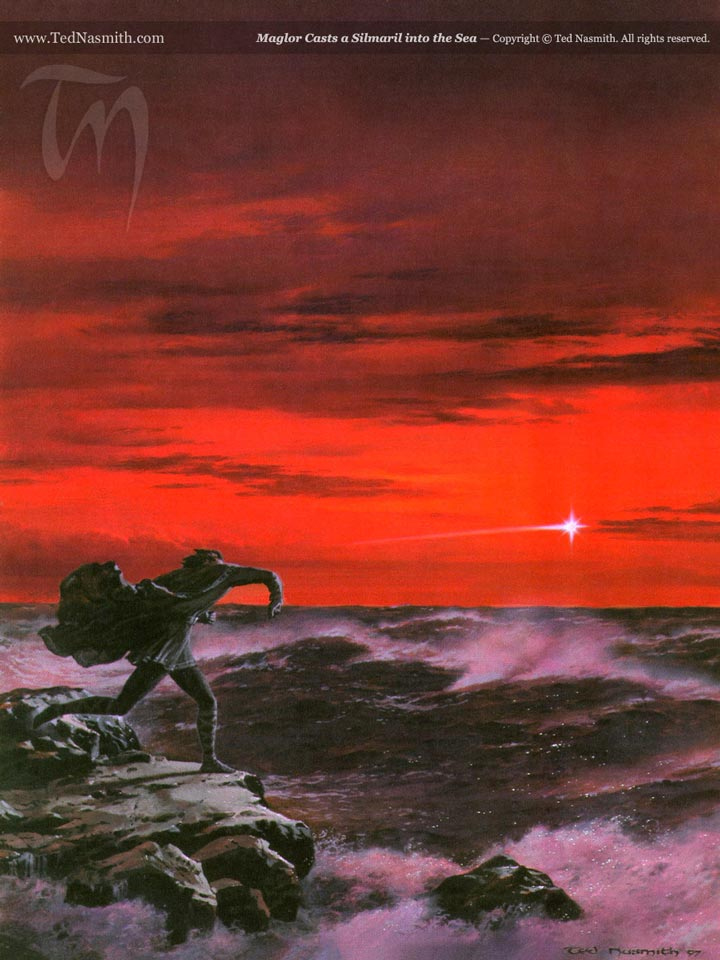
And then he wanders forevermore along the shores. We’re not told which sea—probably Belegaer, which ever encroaches upon the sinking Beleriand, but in theory it could be somewhere else in Middle-earth. Maglor, the minstrel who once composed a song about the Kinslaying he participated in—and goes down in history as the second greatest singer of them all—is never heard from again. He sings “in pain and regret beside the waves,” and that’s that. He never comes back among Elves ever again, so he appears in no more tales.
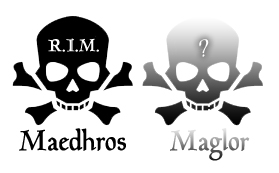
Thus one Silmaril lies buried somewhere deep in the earth. One has fallen into deep waters. And one rides above the atmosphere with Eärendil and Vingilot. So at least one of three is enjoyed by all from afar, while the people of Valinor are denied those glowing remnants of the Two Trees they adored.
We’re told that most of the Eldar do answer the summons of Eönwë and sail into the West. All the Vanyar go back, of course, but with them go most of what’s left of the Noldor and Sindar—those who fled from the havens of Sirion or were set free from Angband.
They were admitted again to the love of Manwë and the pardon of the Valar; and the Teleri forgave their ancient grief, and the curse was laid to rest.
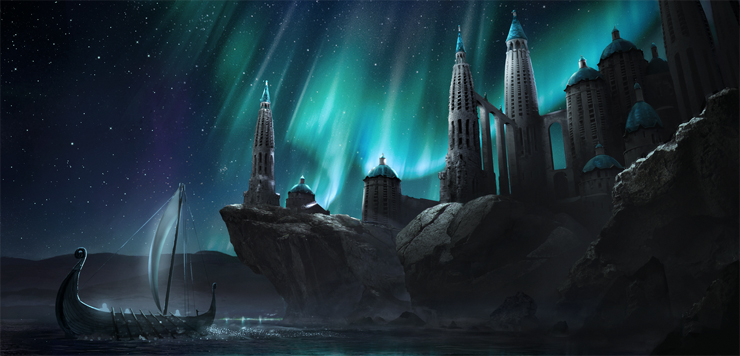
Woo! No more Curse of Mandos! And everyone is friends again. The reunions must be joyous indeed, and who knows which of the slain Elves of Beleriand have yet been released and re-embodied from the Halls of Mandos by this point? Whatever sorrows they had known may yet be soothed. And all of them get to know Nienna. Way back in the Valaquenta, we were told that…
all those who wait in Mandos cry to her, for she brings strength to the spirit and turns sorrow to wisdom.
At this point, that’s most of the royals of the Noldor who’ve gone to the other side.
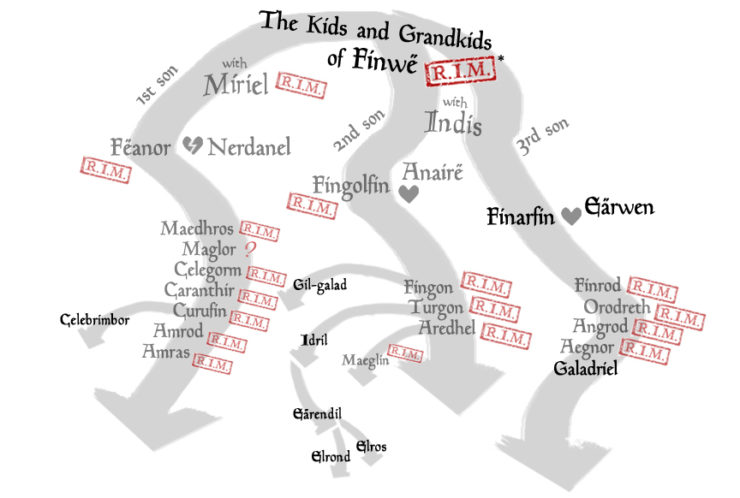
Now, who among the Eldar isn’t leaving Middle-earth? Well, an uncertain but relatively small number of Noldor (from whom Elves like Gildor likely stem) and some Sindar (from whom Elves like Thranduil of Mirkwood definitely hail). But also these folks, specifically, will be sticking around:
- Galadriel, the last of the Noldorin leaders who staged that famous walkout in Valinor
- Gil-galad, the last High King of the Noldor
- Celeborn, kinsman of Thingol and husband of Galadriel
- Celebrimbor, son of Curufin (and thus the grandson of Fëanor), who’s surely itching to get back into arts and crafts
- Círdan the Shipwright, the ever-faithful coast-dweller

And of course, Elrond and Elros Half-elven. We’ll be coming back to them in the last two chapters of this book. But for now it’s important to know that from these brothers, the blood of the Elves “and a strain of the spirits divine that were before Arda” live on. That is: Great-great Grandma Melian the Maia’s blood is in that mix along with the blood of all three kindreds of the Eldar and the three houses of the Edain. And oh yeah, their dad continues to circle the world with a star on his head.
So by the endpoint of the chapter—and in preparation for the next one—Beleriand has largely crumbled away, and the Great Sea has swallowed it. So what does remain? Well, a whole swath of Ossiriand survives and forms the new western coastline of Middle-earth, but all its signature rivers have vanished. That entire region is renamed Lindon. The Blue Mountains also pull through, though they’re sundered into two halves by the Gulf of Lune (often spelled Lhûn). At the far eastern end of the gulf is the future site of the little port city of Mithlond—better known as the Grey Havens!
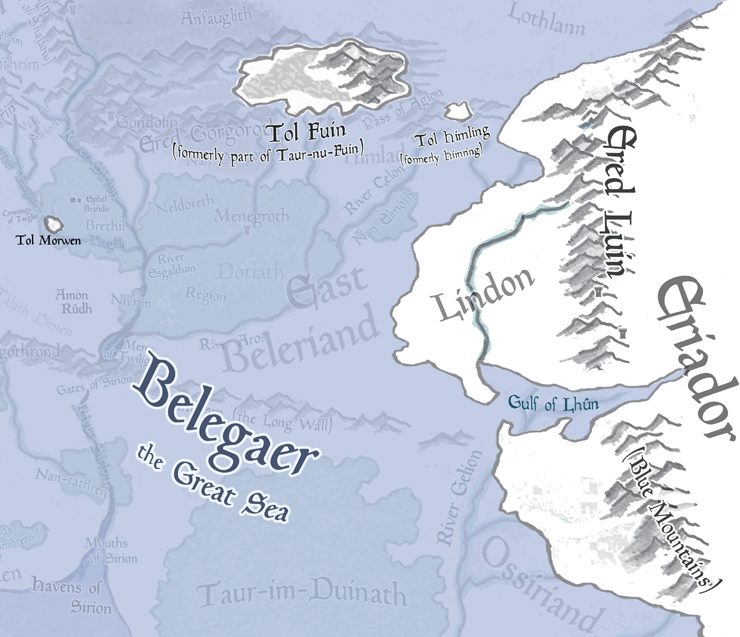
Oh, and speaking of the Blue Mountains, what happens to the Dwarves?! Well, while the Dwarves of Nogrod may have been greatly diminished by their ill-advised tussle with the Elves of Doriath (not to mention old Beren One-handed), they kept to themselves during the War of Wrath, as did those of the city of Belegost, for certain. But did those cities survive the shake-up? For that answer we actually have to look at the “Durin’s Folk” section of Appendix A in The Lord of the Rings:
At the end of the First Age the power and wealth of Khazad-dûm was much increased; for it was enriched by many people and much lore and craft when the ancient cities of Nogrod and Belegost in the Blue Mountains were ruined at the breaking of Thangorodrim.
So there we are. While both Dwarf cities get wrecked in the cataclysm, it seems like many and/or most of the Dwarves themselves were able to abandon them, go east, and seek their fortunes and their mines in Eriador and beyond.
Anyway, that’s for the land masses that remained. But what about islands? Well, in The Silmarillion itself, Tolkien only cites one at the end of Chapter 21, that place where Morwen and Túrin lie entombed (with Nienor merely memorialized):
and still Tol Morwen stands alone in the water beyond the new coasts that were made in the days of the wrath of the Valar.
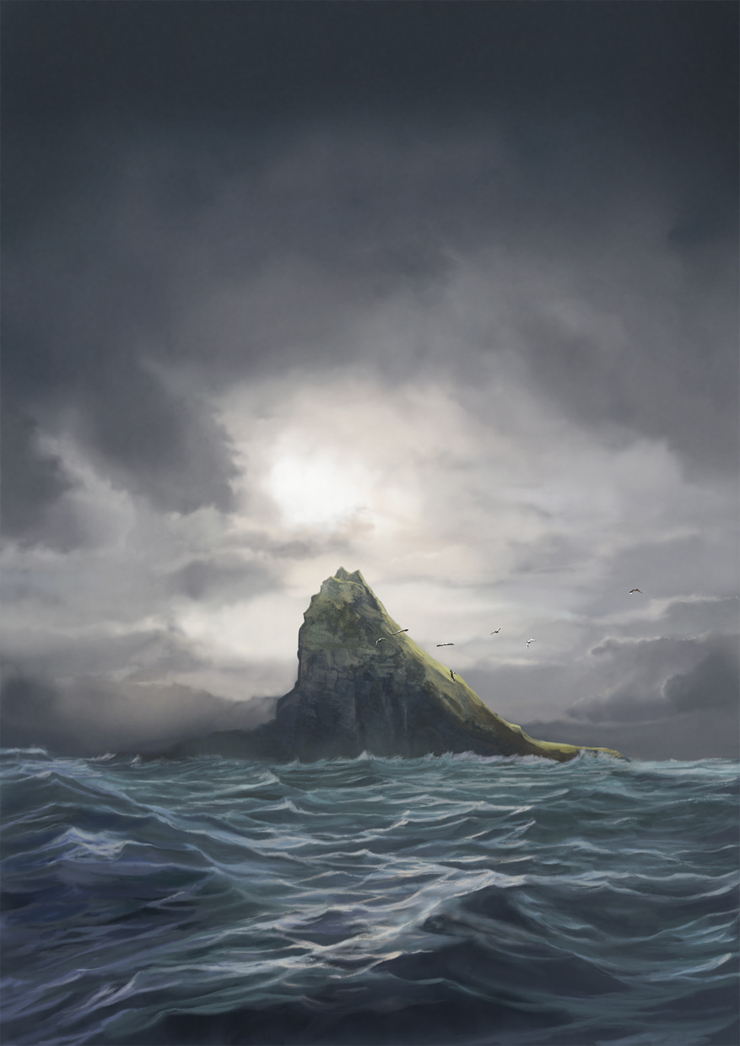
That said, Tolkien had two other parts of Beleriand in mind, cited in Unfinished Tales but not actually mentioned in the published Silmarillion. One is the hill of Himring, upon which Maedhros had built his fortress in the years of the leaguer of the Noldor. On the maps of Eriador in The Lord of the Rings, you can also see it there just off the northwestern coast, and it’s labeled Himling (which had been Tolkien’s earlier name for it). The other is only a little further to the west, and it’s a much greater stretch of land. It’s a part of what used to be Dorthonion, where Finarfin’s sons Angrod and Aegnor once ruled, and which later became Taur-nu-Fuin (the Forest under Nightshade) after the Battle of Sudden Flame. And now it’s just a larger island called Tol Fuin.
And so ends the First Age, with most of the remaining Elves having sailed west to Valinor.
Heyyy, what about Morgoth? Well, there’s a special place in the Void prepared for him, and that special place is everywhere and nowhere. He gets no cozy cell in Mandos Penitentiary this time, no three-age sentence and retrial. The Valar’s tolerance for him now is exactly zilch. Even Nienna, who once spoke in his defense, is basically, “See ya, wouldn’t wanna be ya!”
No one’s sorry to see him go.
He is “thrust” (or maybe frog-marched and drop-kicked by Tulkas?) out into the Timeless Void, a.k.a. the Everlasting Dark, the very non-place where he started. Don’t let the Door of Night beyond the Walls of the World hit you on the way out, Morgoth!
He is now outside Arda, and outside Eä, the Universe itself, and lacks the power he once had to slip back in. And Eärendil will keep eyes on the Door, just in case. Morgoth can’t hurt anyone in the Void because there is no one there. There’s nothing to create, no one to control, no thing to mar. There isn’t even a Flame Imperishable to seek (which got him in trouble in the first place) since that’s always been with Ilúvatar.
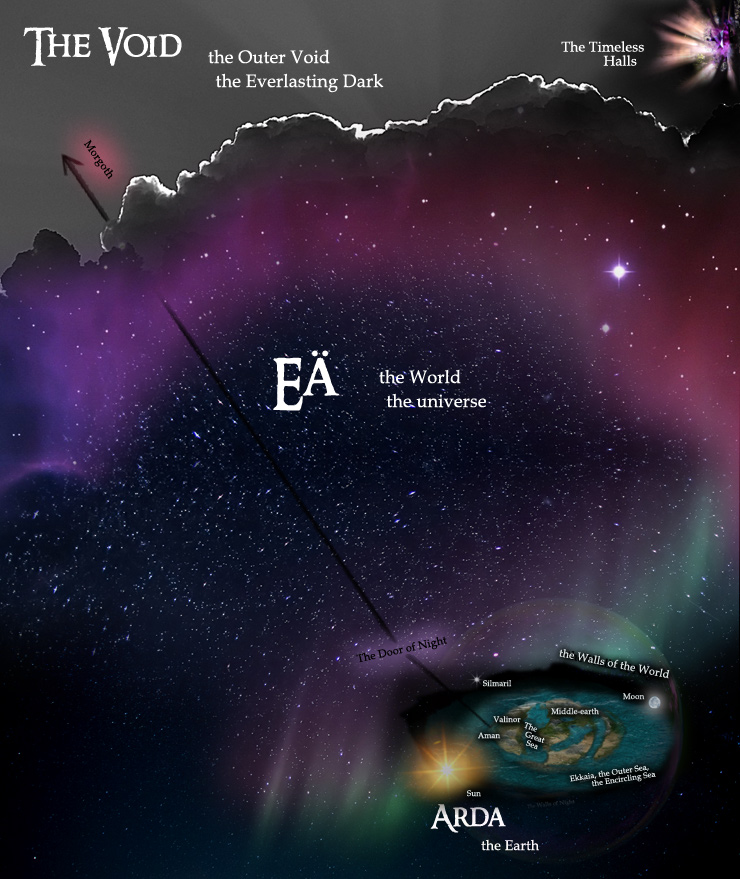
Morgoth faces utter unending boredom, I suppose you could say. He doesn’t even get a mirror in which to admire or loathe his own hideous, Eagle-scratched face. Boo-hoo.
But…Arda is still Arda Marred, and though he cannot micromanage his evil anymore, it does live on in the world without him. It’s in the hearts of Elves and Men (and Dwarves) still; moreover, it cannot be eliminated until such time as Ilúvatar has the world remade again. I suppose Morgoth could take these enduring stains of evil as some kind of consolation prize, but it’s not like he gets to witness and enjoy it.
So the Dark Lord is defeated! Long live the…second Dark Lord? That’s right, there’s no mention of what happens to Sauron just yet. But we know he’s still around and will be up to no good in due time. It seems to be in Tolkien’s nature to present information in dramatic rather than chronological order. But for Primer purposes, it’s helpful to know that Sauron isn’t simply grabbed up and tossed out into the Void like his boss. In fact, after Morgoth gets the boot, Sauron is seriously freaked out. While the surviving Balrogs buggered off, he willingly comes forth to apologize to Eönwë, seeking pardon. Hard to imagine the future Lord of Mordor doing even that much, isn’t it?
But granting pardon to one anyone, especially a peer of his own spiritual rank—a Maia, and a genocidal tyrant and slavemaster at that—is well above Eönwë’s pay grade. You don’t seek forgiveness from a fellow student if you deface school property and beat up a bunch of other kids…you face the principal. Eönwë tells Sauron he must go to Aman and face the judgment of Manwë, which means accepting humility. Say, do you think he’ll do it?
Well, that’s the end of the Tale of the Silmarils, but not the end of the book. If you found your first read-through to be challenging, know that you’re not the first.

In the next Primer installment, we’ll take on the Akallabêth , a.k.a. the story of the rise and fall of Númenor, which also explains why the Dúnedain have so much mojo. But first, I’ll be offering a review of the new book, Tolkien: Maker of Middle-earth, the tie-in to the Bodleian Library’s current exhibit featuring the work and life of our favorite professor!
Top image from “The Dragon and the Star” by Manuel Castañón.
Jeff LaSala isn’t in to pro-wrestling or anything, but sure would love to see a WWE-style cage match of Tulkas vs. Morgoth play out properly, with ropes, improvised weapons, folding chairs, and all. Tolkien geekdom aside, Jeff wrote a Scribe Award–nominated D&D novel, produced some cyberpunk stories, and now works for Tor Books. He is sometimes on Twitter.










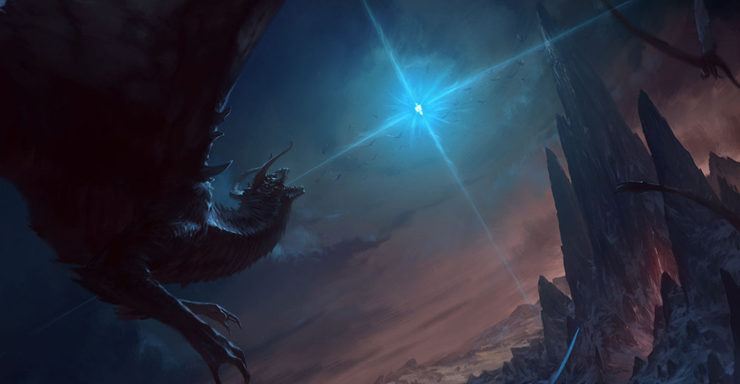
A couple of follow-ups:
I’m honored that this article is debuting that Kip Rasmussen painting above, “Tulkas Chaining Morgoth as Eönwë Holds the Iron Crown.” I love how undignified Morgoth is forced to be there. How humbled.
As for the M-brothers: The situation there at the end for them was definitely stricky. But I also think it sure would have been helpful if they’d remembered what happened the first time Melkor himself faced the judgement of the Valar. (Remember, he’s the guy who invented evil and had dished it out more than any other being in Arda.) He was sentenced to imprisonment and was still set free on good behavior eventually. Sure, Mandos and Manwë would probably have been rather tough on Maedhros and Maglor, but they’re still Children of Ilúvatar, for crying out loud. Compared to Melkor, they’d have been tried as minors. It might just be a slap on the wrist for these two, relatively speaking. And heck, I bet Nienna would have spoken up in their defense, even as she had for Melkor. Not to mention they’d have been able to see their mom again, there in Valinor… Sad.
And that’s all I really want to say about Maglor, since I’m not one to venture into fanfic territory.
Also, I’m well aware that in various History of Middle-earth books, it’s included that Tolkien tampered with the idea of going more into the absolute end of Arda when there’s one more big battle, wherein Morgoth destroys the Sun and Moon, Túrin shows up with the Black Sword gets to kill Morgoth once and for all. But he ultimately rejected that ending and so Christopher Tolkien didn’t include it in The Silmarillion (I’m glad), which is why I don’t go into it in my post above.
I wonder if Olorin was one of the Maiar who fought in the battle? Probably was. He doesn’t seem the sort to stay at home knitting his socks. Probably ran into a balrog or two as well. And a couple thousand years later the balrog’s all like “Hey! I remember you!”
wiredog, see, I almost speculated about that myself. But then I thought, he usually hangs out with Nienna. I don’t think she or her closer Maiar friends are the warring type.
Now Curumo…maybe. But even he seems like he’s more likely to send others to do things for him.
Maybe Olorin went as one of the Valar medical corps? Comforting and healing all those captives would have required Nienna and Este’s best.
This seems as good as place as any, now that the First Age has ended and I’ve mentioned Huan again, to share this wonderful illustration made by a friend.
On the right is Huan, the legendary hound of Valinor. On the left is ChiHuanHuan. The pic says it all.
“ChiHuanHuan” by Angeli Rafer @angeliraferart (https://www.instagram.com/angeliraferart/)
I too think Olorin turned out for the War in some capacity.
You always find great art, but you’ve outdone yourself with the set for this article. The Chaining is impressive, the lights extremely well done, but I favor most the one below of Ulmo holding back the sea.
i hope Earendil and his kids got to at least exchange meaningful looks before he went back up into the sky.
I’ve seen criticisms of the Vala for the first round of taking out Morgoth, not flooding his dungeons and making sure they cleared out everything. I wonder if part of the destruction of Beleriand was for that exact purpose, and the rest was collateral damage.
I think it was probably a good thing the Elves of Valinor fought for various reasons but the one I’ll spell out here is:. They’ll understand those who faced down Morgoth for 500+ years better. When you’ve never left paradise or dealt or done and seen the sorts of things that go along with war, it can be hard to understand those who do. Wouldn’t it be awful to be forgiven/re-bodied back home with the family and still be sort-of exiled due to experiences the others just can’t get? And that state will go on as long as the world endures? brrrrr.
@1: going off of memory here, but wasn’t that pretty much maglor’s argument? to parapharse ” if those we called as witnesses to our oath deny the fulfillment of it, isn’t it rendered void?” maedhros figured they’d be screwed if they couldn’t get off on that technicality, maglor argued they’ve killed enough people that the everlasting dark is likely their fate anyway, whatever they do and finally gives in with a depressed “we’re damned no matter what, why the hell not?”
a good lawyer and some therapy could have prevented this final tragedy for the sons of feanor, particularly as these were the only ones of the lot that weren’t constantly complete dicks (okay, maybe amrod and amros, but who knows? those guys were basically royal redshirts).
Sauron – Maia, Assistant to the World’s Greatest Asshole
I couldn’t help but think of Sauron as Dwight as I read this, because OF COURSE Morgoth would’ve corrected Sauron when he introduced himself as Assistant Dark Lord (which now absolutely happened in my head canon).
Informative and entertaining as always, Jeff.
@7 They also named Ilúvatar in witness, and sadly Maedhros felt like they wouldn’t be heard by him. Tragic. But also, I just can’t help but wonder how things would have gone if the two brothers did go to Valinor first and met with their mom, Nerdanel, first.
@8, yeah, to me that joke was worth putting Sauron on the bullet list, even though he doesn’t actually get mentioned here. Doesn’t mean he’s not very present. Hell, I wonder if he even fought in the War of Wrath. He might not have. He’s a puppetmaster-in-training, after all.
The big question is:
Is the Arkenstone of Erebor actually Maedhros’s Silmaril?
All the descriptions in The Hobbit imply it indeed is, and Erebor is an extinct volcano. It also appears the Arkenstone, like Silmarils, has its own will; it wants to get back into the earth, as it today lies in Thorin’s tomb.
The Silmarils are said to be part of all great events of the world. Actually it was Smaug’s raid to Erebor and recapture of the Arkenstone which led into the rediscovery of the One Ring, into the War of the Ring, and end of the Third Age and final migration of the Eldar to Aman and beginning of the Dominion of Men.
There are three Silmarils – one for each Free People. We know that of Elves today as planet Venus, that of the Dwarves is in Erebor, and all we need anymore is to find the one Maglor tossed into Atlantic. Then we are ready for the tikkum olan for good.
I love how undignified Morgoth is forced to be there. How humbled.
Undignified is right – it looks as if Tulkasis about to put him over his knee!
@@@@@ 6: the desire to go easy on the land, with the elves having just awakened, is mentioned as a major reason they pulled their punches (and did not get everything wiped clean). knowing they left some monsters and stuff about was behind the initial summoning to valinor; what happens in middle-earth, stays in middle-earth. mostly though, i think it is forgotten, or overlooked that the valar (okay, mostly manwe) are incredibly naive. especially in regards to melkor. manwe is the optimistic fellow, who thinks their intervention with melkor really, like, changed him! no, really! he said he won’t try and take over the world and kill us all ever again! why wouldn’t we believe him, he’s our BROTHER!
at least all the valar learned the lesson second time ’round.
@10: I really don’t think so. Many reasons exist for why the Arkenstone-as-Silmaril doesn’t quite work, but one of the big ones is how would it end up so far to the east if it was (likely) thrown into a chasm in sinking Beleriand. But even bigger, maybe, is the whole “hallowed by Varda” aspect and Dwarves being mortal (granted, they obviously used gloves when working with the Nauglamír). I don’t think the Arkenstone draws nearly as much obsession as the Silmarils do. While Thorin is rather Arken-crazy, others around him aren’t.
i think the arkenstone is more a rough draft of the silmarils. like thandruil is partly a rough draft of thingol.
@10
I’m fairly certain the Arkenstone was not a Silmaril if for no other reason than it was “… cut and fashioned by the dwarves, who had dug it from the heart of the mountain long ago …” Any Silmaril would have already gone through that process when made by Fëanor.
The Arkenstone also lacked the brilliance of a Silmaril; “… even in the darkness of the deepest treasury the Silmarils of their own radiance shone like the stars of Varda…” If the Arkenstone were a Silmaril Bilbo would have spotted it on his first trip down the tunnel, not to mention the rest of the dwarves when they entered Smaug’s den.
I’ve been thinking about the battle between Eärendil and Ancalagon — since I just finished rereading the War of Wrath — and I wonder if somehow Eärendil weaponized the Silmaril. Imagine a blast of pure light tearing through Ancalagon; that would pretty much do the trick. Even if the Silmaril itself doesn’t have the capability, maybe its proximity to his normal weapons enhanced them, as you said. Or maybe he has Light Arrows and a lightsabery sword given to him by the Valar. It’s definitely fun to ponder.
I’ve always wondered why the Silmaril that Maglor tossed into the sea remained lost- surely Ulmo can retrieve it if he chose. Maybe he decided it was safer were it was, and Maglor would be completely free of the oath that way.
@13: and @15: The Hobbit describes the Arkenstone as “having its own light” i.e. being self-illuminant. And yes, Thorin was just as jewel-crazy as the smiths who tinkered Silmaril on Nauglamir at Nargothrond. My explanation was that the Dwarven smiths just removed any accumulated matter (like diamond dust) off the Arkenstone, and cleansed it back into the original form.
It may be Maedhros and Maglor ran really far with their swag, and Maedhros did not commit the suicide immediately. Or perhaps Middle-Earth had really crazy plate tectonics back then?
Just thinking :-)
Another minor point about the Silmaril: it was unfaceted. The Arkenstone was not, as described by Thorin:
@17: I’ve wondered the same, about Ulmo and the “lost” Silmaril in the Sea. But then I thought the mythic quality of all these stories, and the spiritual nature of choices. Had Maedhros grappled with Elwing for the Silmaril, for example, and the Silmaril merely skittered over some balcony or cliff’s edge and then fallen into the sea, I don’t think Ulmo would have carried it over to Eärendil. Rather, it was Elwing’s decision to take the Silmaril with her in her act that seems to spur Ulmo to transform her and allow her to deliver it herself. So I feel like Maedhros’s decision to fling himself into the fiery earth would keep Aulë from bothering with it, or from Ulmo from plucking the Silmaril that Maglor threw out again. The Valar honor choice, in observance of Ilúvatar’s ways, and his mercy.
It’s also possible that they simply couldn’t find them. Ulmo may have total mastery over water, but the Silmarils were also made by the hand of a Child of Ilúvatar and the Valar had no hand in their creation. Their closest connection to the gems was the light in them, from the Trees.
Again great work. Thank you!
I like playing around with the ‘what-happened-to-the-Silmarils’ (and Maglor) theories but overall I do think it’s fairly clear none of it was intended by Tolkien. I think it can be fun to speculate a bit, as a kind of headcanon. As a really weird one, I am pretty sure I read a theory that Tauriel, a redhead, is possibly a Feanorian (since Nerdanel is one of the only red headed Elves who egts mentioned) and perhaps even a descendant of Maglor. No, I don’t literally believe this, but it’s the kind of geeky thing that makes me laugh.
I like your CS Lewis quote but I think it would apply more truly to Illuvatar in this context (although I agree it’s likely that Manwe stayed on his mountain even if other Valar came across – I always just assumed at least some of them had).
@19: Here is the description of the Silmarils:
‘Like the crystal of diamonds it appeared, and yet was more strong than adamant, so that no violence could mar or break it within the Kingdom of Arda. Yet that crystal was to the Silmarils but as is the body to the Children of Illuvítar: the house of its inner fire, that is within it and yet in all parts of it, and is its life. And the inner fire of Silmarils Fëanor made of the blended light of the Trees of Valinor, which lives in them yet, though the trees have long withered and shine no more. Therefore even in the darkness of the deepest treasury the Silmarils of their own radiance shone like the stars of Varda; and yet, as were they indeed living things, they rejoiced in light and received it and gave it back in hues more marvellous than before.’
And in The Hobbit, the Arkenstone:
“‘It was the Arkenstone, the Heart of the Mountain. So Bilbo guessed from Thorin’s description; but indeed there could be no two such gems, even in so marvellous a hoard, even in all the world. Even as he climbed, the same white gleam had shone before him and drawn his feet towards it. Slowly it grew to a little globe of pallid light. Now, as he came near. It was tinged with a flickering sparkle of many colours at the surface, reflected and splintered from the wavering light of his torch. At last he looked down upon it, and he caught his breath. The great jewel shone before his feet of its own inner light, and yet, cut and fashioned by the dwarves, who had dug it up from the heart of the mountain long ago, it took all light that fell upon it and changed it into ten thousand sparks of white radiance shot with glints of the rainbow.’
The big question is: Could Maedhros’s body contain enough carbon to form a diamond shell over the silmaril in the tectonic pressure and temperature? If yes, that would also explain the facets: the Dwarves just refashioned the outer diamond shell formed from carbon of the corpse of Maedhros.
Just pondering…
@22
In a word, no.
And there could not have been tectonic activity like what you suggested. Maedhros leaped into a chasm west of the Blue Mountains. Erebor is far east of the Blue Mountains. We’re not talking millions of years of geological activity and tectonic drift. The maps and lands are well known at this point.
And I agree with JLaSala’s point. Varda’s hallowing is still in effect and many mortal and non-virtuous folk handled the Arkenstone without difficulty. The Arkenstone is NOT a Silmaril.
i do wish Christopher Tolkien had not removed the Dagor Dagorath-heck it’s still a part of my headcanon.
“Morgoth, He Who Arises in Might” I think is my new favorite depiction of Morgoth. That is seriously bad-assed.
I wonder if Curumo might have been involved in the conversion of the Iron Crown into a collar. It seems like the sort of thing that might have helped get him named to head the wizards.
@25 Amazing, isn’t it?! Do check out the artist’s Varda, Ulmo, and Manwë! I’ve never been fond of the scads of “pretty boy” Melkors so many artists have made of him. This one strikes a nice middle ground between Scary-Ass Crimelord Morgoth and Ainu who was once fair. I particularly like the cracks in his face…
The fate of Maedhros and Maglor is always a tragic one for me to read, and it’s hard not to think (and fanfic) about all the ways things could have gone otherwise.
The meaning of “the Everlasting Dark” is a confusing one for me, though. If they were human, the equivalent statement would be “we’re damned either way”, but insofar as I can tell, there is no Elven equivalent to hell. Basically, they have eternal life, with the possiblity of an occasional time-out in Mandos. So what is meant by “the Everlasting Dark”? Did Tolkien ever comment on this?
“I suppose Morgoth could take these enduring stains of evil as some kind of consolation prize, but it’s not like he gets to witness and enjoy it.”
I think that’s the absolute worst thing that they could have done to Morgoth. Domination of others is what gave his existence its meaning, and now an eternity of total isolation. Exactly what he deserved, and very similar to what befell Voldemort.
@27 Jeff, those are fantastic. The art you include is just as enjoyable as the recap and discussions.
I like the Ulmo picture the best.
@29 Flypusher
See, but I haven’t read past Sorceror’s Stone (or Philosopher’s Stone, if you prefer), nor seen the films, and now you just spoiled it for me.
Off-topic – did we ever find out more about Luke’s father?
@28, Christopher in The Shaping of Middle-Earth (pg 252 of my hard cover after several pages of diagrams of the universe), writes: To begin from the Outside: beyond the Walls of the World lies ‘the Void, the Night without form or time.’ Kuma (Ava-kuma); and this is of course an aboriginal conception, ‘the outer dark’, ‘the limitless dark’, the starless vast’ of the tale of the Hiding of Valinor.”
I expect that’s what the Oath invoked for failure, exile out there, for the rest of existence, which being Elves, will be a very long time.
p.s. Dug out Morgoth’s Ring, where the Oath is found. Yep, Feanor invoked the Everlasting Dark for failuring to carry out the Oath.
Yes, Fëanor invokes the Everlasting Dark in his Oath, and “by the name even of Ilúvatar.” But so what? This is why I said the M-brothers have daddy issues here, because they’re thinking/fearing that somehow their dad’s Oath was powerful enough to actually…what? Actually consign them to the Void even if the Valar tried to stop it? Maybe they did think that. That’s the sad thing. Eönwë told them their Oath was void now, because he knows it from Manwë, who was himself also called as a witness to it. Maedhros’s fear of his father’s will was greater than his willingness to accept that the Valar, and Ilúvatar, are greater by far. That’s the tragedy of it.
Fëanor was arrogant enough to believe that simply swearing by it would Void-doom any who didn’t keep it, and he made his sons believe it.
Sauron: Assistant World’s Greatest Asshole
Jeff LaSala: Assistant TO the World’s Greatest Asshole
Sauron: *skulks*
What gets me is this is the moment when the M-brothers could have turned away from the oath. We’ve seen the good in these two. We know they can turn away from this destructive path.
This is the part where, as a reader, I’m saying, Maedhros, listen to your brother. You know what’s right and you know what’s wrong. Stop making excuses and do the right thing. Maglor even tells him it’s better to break the oath if they do less harm that way.
I’m also screaming at Maglor, “If you’re brother jumps off a cliff, does that mean you have to jump off it too? Don’t do this!”
They never listen.
I don’t know if Tolkien ever struggled with depression (he was a writer and he’d also gone through World War I, which sounds like two big yeses, but I don’t know). However, he’s got a strong theme going about not giving into despair, no matter how hopeless things seem. Denethor, for example, is tricked by Sauron into believing everything is hopeless. Because of that, he makes the situation that much worse, committing suicide and nearly killing his son. On the other hand, Aragorn continues to fight even when he thinks he’s seen proof-positive that Frodo has failed and been captured. Frodo continues with the quest despite what seems impossible odds.
The M-brothers give into despair. Maedhros convinces himself that the damnation they face for keeping the oath must be better than the one for breaking it. Maglor disagrees but doesn’t have the strength to walk away from Maedhros.
And I just want to scream at them to NOT DO IT.
ellynne, you definitely nailed it with these themes. And, to be fair, when Maedhros jumped off a cliff, well…Maglor didn’t do that. :)
I 100% agree with your decision not to engage in fanfic stuff related to Maglor, but I would like to point out that Tolkien actually did create an ending for him. It’s from the Lay of Lethian:
“No other player has there been,
no other lips or fingers seen
so skilled, ’tis said in elven-lore,
save Maelor son of Fëanor,
forgotten harper, singer doomed,
who young when Laurelin yet bloomed
to endless lamentation passed
and in the tombless sea was cast.”
It’s considered his “last word” on the subject, but whether or not you consider it canon is totally up to you.
That pic of Ancalagon by Çağlayan Kaya Göksoy is particularly terrifying. It makes him look so huge!
Galadriel, the last of the Noldor leaders who staged that famous walkout in Valinor
Sorry, this is one of my big pet peeves- the adjective form of Noldo is Noldorin, not Noldor.
Essentially, they’re exhibits A and B in the custody of the court of Valinor.
And that leads to today’s fanfic rec, which takes this idea to its logical conclusion: Evidence by Camwyn
@28: I’m not sure Feanor knows, either. Beyond “that sure sounds scary, let me put it into my Oath as a motivator.”
In fact, I’m not entirely certain that “Everlasting Dark” is a real thing. Even if it exists, I have my doubts that it’s exactly what Feanor thinks it is. I can see the Valar using eternal darkness as a metaphor to explain a difficult spiritual concept to Incarnates, and Feanor going, “I’m a genius, of course I understand what they’re talking about.”
>There were too many Elves and Men scattered about the lands then; too many towers and fortresses—too many communities. Too many lives of the Children of Ilúvatar at stake, and the Valar do not forget for whom Arda was made in the first place.
Sooo, let Morgoth thin ’em out, wait for a clear battlefield? That’s how that sounds to me. Is this from some non- Core book? I don’t remember reading this justification, but the only outlier book I have read so far is Unfinished Tales.
> …a more discrete event….
Discreet, surely.
Fixed.
But see, I trust the narrator and Tolkien. The Valar were hesitant to war with Melkor before the Elves started spreading out; they deliberated about it. Manwë sought the counsel of the rest of the Valar over it. It wasn’t clear cut even then, when there was a “clear battlefield.” So moving against Morgoth when the Elves were all scattered and settled in Beleriand was not something they were going to do, certainly not on account of the Noldor, whom they loved but had also thoroughly warned. Thus it took some convincing, some prophecy, and even some leg work from Ulmo to finally act. So no, I don’t think they were waiting for the battlefield to clear first. But when it did, that made the next move more of a no-brainer. And I suspect that some, like Tulkas, were champing at the bit all along.
And even when they moved against Melkor that first time with Utumno, Aulë was grieved for the damage that would be done. Bottom line: It’s no light decision to go smashing up the land, as they surely knew would result in a war against Morgoth.
I generally don’t share the cynicism against the Valar. Because the narrator isn’t presenting them as antagonists, and neither did Tolkien—as is obvious from his letter to Milton Waldman in 1951, which is presented in the book after the Preface. Which is not to say the Valar don’t make missteps. That’s also evident.
I personally like to think of the Valar as well-meaning, but having a steep learning curve when it comes to the eruhini.
This seems like a good time for me to go back and re-read the fanfic “Cities of Dust”, which someone posted a link to here months ago….
I have not been a very verbal contributor to these discussions, but I have been an avid follower and reader of your wonderfully entertaining and enlightening Silmarillion Primer exposes here, Jeff. This last piece was wonderful… and entirely satisfactory! As usual, I have saved a PDF print of this piece in my Silmarillion Primer file on my PC – to savor again… like the others. Thank you SO much for all your efforts, and your wonderful, colorful maps, and the artwork, but especially the explanations. I hated to see it come to an end.
Bonnie Jacobson, Longview, Washington
Mandos’s elite chant “Doom Doom Doom doom-doom-Doom doom-doom-Doom”
I’ve been enjoying this series greatly. I have read the book and I love it, but you’ve increased my appreciation yet more.
I’d like to point out two small typos, if I may.
At one point, you accidentally wrote Angainor as Anganoir. At another point, the word rekindle appears twice in a row.
Being tossed out into the Timeless Void is a pretty hardcore ending. It really couldn’t be any More Goth, could it?
Anganoir would be like the dark and pulp version of it, wouldn’t it? :) Thanks, fixed.
@42, I agree with you. Even the Elves, so seemingly similar are alien to the Ainur on a deep level, belonging as they do to a completely different order of created beings. The Valar made a terrible mistake out of pure love, wanting to protect the Elves, and inadvertently upset their entire destiny. They draw the correct lesson but go too far in the opposite direction with Men, not helping them at all, and that goes badly too.
But Iluvatar, who knows all, probably expected His viceroys to make mistakes, just as He expects Elves and Men to make them. But He says that even error and evil will in the end further his design and create Good unimagined in the Music.
If there’s a show of hands, I’m firmly in the “Valar were directly involved” camp. I just can’t see maia doing that kind of damage to the land itself.
@39, the Dark is a real thing. There’s a Door to it, and Morgoth gets shoved through at the end of this chapter. Feanor also knew, he wandered a lot and poked at the edges of Night himself.
Curses and oaths do have power in Arda. Curufin’s (or Celegorm’s) detailed one on Beren fell out pretty exactly. If you allow a few months for the fast death clause. And the narrator tells us the Oath is prodding them when they pull their stunt in Nargathrond. That plus the Doom/Curse of Mandos may well have been tipping the M-brothers over the edge to despair. Certainly, given the description of in weariness and loathing to attempt in despair, that’s how it reads to me. If they can feel it poking them, no wonder they think they have to make the attempt. As for why they believe their father… Feanor persuaded an enormous population to leave Paradise with him (ok, it wasn’t paradiscal at the moment, but it was still the best place available) and make war on Satan. Feanor had a gift. And he was their father.
I can’t help wondering what would have happened if Eonwe had just let them hold the things, and get burned…
My basic opinion of the Valar is like @42;s essentially making it up as they go along and not fast learners.
Oaths have power in Middle-earth, yes, but I do think it’s still primarily psychological. Which is still power. Just as fear, which is all in your head, is still quite real and oftentimes worth heeding. They’re prodded by the Oath, but it’s because years go by and its “weight” hangs over them. Daddy Fëanor’s Everlasting Dark Sword of Damocles hangs over them, reminding them that the Silmarils are still in other hands.
@51, yeah, for Tolkien names and words had Magic in them. Feanor swore the oath and named specific people, making it a Real Thing. It was a real and binding Oath with supernatural designs, sworn in a land full of magic and power, and sworn before the very real Powers That Be.
“or am I just unable to turn off my D&D sensibilities?”
You’re unable to turn off your D&D sensibilities. Maiar of fire are of the following of Aulë. Before joining Melkor, Sauron and the Balrog were like Curumo servants of Aulë, which is why Saruman was so easily trapped by Sauron.
“The question is, why is there a need to go all the way to Valinor to ask for pardon or to face judgement?”
Because it is the seat of power of Manwë, Lord of Eä. People have always been brought to the king to be judged.
@51: this might just be nitpicking, but I don’t know that Door of Night = Everlasting Darkness necessarily.
@55, per Shaping of Middle-Earth quoted above it does. repeating it: To begin from the Outside: beyond the Walls of the World lies ‘the Void, the Night without form or time.’ Kuma (Ava-kuma); and this is of course an aboriginal conception, ‘the outer dark’, ‘the limitless dark’, the starless vast’ of the tale of the Hiding of Valinor.”
continuing the passage reads: “The Walls of The World, Ilurambar, are the unbroken, uninterrupted shell of a vast globe; they are cold, invisible and impassable save by Ando Lumen, the Door of Night. This Door was made by the Valar ‘when Melko was overcome and put forth into the Outer Dark’; and Earendel guards it. Already in S(section 19) it was said that “Morgoth is thrust through the Door of Night into the outer dark beyond the Walls of the World, and a guard set for ever on that Door’; this is repeated in the corresponding passage in Q where the same expressions are used as in the Ambarkanta, ‘the Door of Timeless Night,’ ‘the Void’, and where Earendel, sailing…” it goes on for a while discussing that the concept of a Wall around the world protecting it against an external Emptiness and Darkness’
Timeless, Void, Empty, Dark From the outside in the very beginning of the Silmarillion “‘Behold your Music!’ And he showed to them a vision, giving to them sight where before was only hearing; and they saw a new World made visible before them, and it was globed amid the Void, and it was sustained therein, but was not of it … while the Ainur were yet gazing upon this vision, it was taken away and hidden from their sight; and it seemed to them that in that moment they perceived a new thing, Darkness,.”
They all point to the same thing: walled world, outside of which is no time, but dark void. Timeless void seems pretty much the same as everlasting darkness.
Which is why I made the very-not-to-scale diagram above of the Void, Eä, and Arda. IF you could even properly diagram such a thing.
Oh, and a reminder: Both the Akallabêth and “Of the Rings of Power and Third Age” will still get their Primer treatment, two weeks after that book review (which itself would take the normal place of a Primer installment in about two weeks).
Here’s what I’ve always wondered. As Elrond and Elros were in the company/keeping of the M-Brothers, did either of them actually *see* a Silmaril with their own eyes, close up?
I think it’s a possibility, but there’s nothing in the text to support or deny it either way…
@39
Feanor: Everlasting darkness will claim those who do not keep their word!
Mandos: You keep using that word. I do not think it means what you think it means.
Re: M & M and Oaths
“But how shall our voices reach to Ilúvatar beyond the Circles of the World? And by Ilúvatar we swore in our madness, and called the Everlasting Dark upon us, if we kept not our word.”
Logical inconsistency. If their voices will not reach Ilúvatar in supplication, to be released from their oaths, then how did their voices reach Ilúvatar in the first place when they made the oaths.
If they really believe that Ilúvatar won’t hear them, then they should also believe that Ilúvatar ever heard their oaths in the first place.
Thank you for a wonderful discussion and really bringing extra life to “The Silmarilion” beyond what I got from reading it.
Gah. Should have proof read better. Question mark at end of second paragraph. “Never” instead of “ever” in third paragraph.
@10,22/Beruthiel,
I was also struck by the similarity of the Arkenstone to the Silmarils, although when details are checked they do not match. I’d guess that the Arkenstone was inspired by the Silmarils, though. And if we wanted to speculate, we might say that Aule had the power to create an Arkenstone with its own kind of “living light”, and left it as a kind of Easter Egg for the dwarves.
Regarding the Arkenstone, Corey Olsen makes a splendid argument that it was indeed inspired by the Silmarils, as part and parcel of the wholescale recycling that JRRT did in The Hobbit, borrowing from stories far and near including his own.
But when The Hobbit was being written, it wasn’t set in Middle-earth: “Elrond” and “Gondolin” simply had the same names as a person and a city that JRRT liked, they weren’t the same person/city. The “Arkenstone” shared a name that had been used for the Silmarils in an earlier form of the text (specifically the word “eorclanstánas” ;-) but it wasn’t an actual Silmaril as those existed in a completely different secondary world.
That didn’t change until he was writing Lord of the Rings and a wooden-shod Hobbit Ranger named Trotter sat down in a dell under Weathertop and told his companions “I will tell you the tale of Tinúviel”…a line which Corey Olsen argues might well be the most important line JRRT ever wrote as it signified the falling of the firewall between his “Hobbit sequel” and his ongoing chronicles of the Elder Days.
As to the question of Elemental spirits, I’ve heard very good arguments that Melkor was supposed to be the Vala of Fire, to balance out Aulë/Earth, Ulmo/Water and Manwë/Air. Sauron (or “Mairon” as he called himself back then) and Curumo were indeed Maiar of Aulë but nothing I’ve seen suggests that they had any particular tendency towards flaming up like those who ended up as Balrogs. The closest to that might well be Arien who ended up guiding Anor the Sun on its course, except we’re told that she served “Vána the Ever-young”…so maybe there wasn’t such a rigid compartmentalisation as D&D rules-wonks might like ;-)
“Melkor was jealous of him, for Aulë was most like himself in thought and in powers;”
I’d say that Melkor
“Arien the maiden was mightier than he, and she was chosen because she had not feared the heats of Laurelin, and was unhurt by them, being from the beginning a spirit of fire, whom Melkor had not deceived nor drawn to his service.”
I’ve found no mention in the Silmarillion about Arien serving under Vana, only that she “tended the golden flowers in the gardens of Vána, and watered them with the bright dews of Laurelin;”
I can’t remember right now who was the Maia who took care of Telperion, but as fas as I remember, she was not of the following of Yavanna either.
I really think that Melkor was supposed to be the Vala of the mind’s fire, the embodiment of emotions, just like Manwë is the Vala of the mind’s spirit, the embodiment of calm (cold?) and careful thinking. Both would have ruled together, the fire that destroys then tempered by the wind that soothes, but still removing the old so that the new could emerge.
With the rebellion of Melkor, Aulë of the Earth and its fires took upon part of that mantle, hence getting the Maiar that should have been Melkor’s followers. It explains why so much of his followers were corrupted by Morgoth, and also why it was so easy for the Noldor to fall into Morgoth’s trap.
Assigning Melkor one sphere of influence doesn’t seem to fit with this description, though:
“To Melkor among the Ainur had been given the greatest gifts of power and knowledge, and he had a share in all the gifts of his brethren.“
@61, their original oath was taken in Valinor, a land steeped in magic and power with a much closer connection to Iluvatar. Feanor named Iluvatar specifically in the oath, so that would have gotten Iluvatar’s attention. An oath in a setting such as this is more than just a verbal agreement, especially one taken in the place and manner in which Feanor swore it; breaking an oath or failing to live up to it had serious negative connotations, such as the men of the mountains that forsook their oaths to the King of Gondor and were cursed until Aragorn released them.
You answer your own question. (Granted, it was rhetorical….) The Brothers M must go to face judgment because they must choose to face it.
Maglor eventually took his C&W tour to Eastern Greenwood, where he established a kingdom within sight of the mountain where (rumor had it) a big jewel that sounded an awful like a Silmaril was found by the Dearves. He waited patiently until the dragon that guarded the mountain got bumped off then showed up with an army “for humanitarian purposes.” Remember the look on the face of the “Elvenking” when Bilbo brought out the jewel?
The body of the real Thranduil was never found…
Thought experiment: what would have stopped Eönwë having the M&M brothers swear another Oath (apart from their arrogance and Daddy issues, obviously)? One that read something like “Each one of you can and will take up one of the Silmarils, and be its Bearer, on the condition you will return to Valinor for Judgement upon your actions.”
I’m not sure I’ve got the wording right, but if Eönwë selected the right words, he’d get two guards that are really motivated in keeping the Silmarils safe, and get sound he jewels back to Valinor. It would still give M&M the choice, but now (if Eönwë chose the correct phrasing), their choices included fulfilling their Daddy’s Oath.
Discovering the only way they could fulfill their new Oath with burning pain might also be considered a bonus (by everyone).
Their ultimate Judgement in Valinor could then have their original Oath be repealed, and their “ownership” of the Silmarils could be forfeit. Have I missed anything which would have made this impossible?
@66: Indeed. But “of the airs and winds Manwë most had pondered“, yet he is described as “the brother of Melkor in the mind of Ilúvatar,” Being bound to Eä probably changed all the Ainur involved, be they Valar or Maiar.
@70: They have already proven unfaithful and untrustworthy. Also:
That’s the whole point: they can’t be released from that oath because they can’t reach to Eru. They can keep it and be damned, of break it and be damned. And once again, the pride of Fëanor’s blood led them to the wrong choice.
I note that many above comment on Eönwë and the commanding part he played in the forces of the Valar, possibly even suggesting that none of the actual Valar came to the War of Wrath, or that at least Manwe did not.
It should be remembered thar originally Eönwë was not merely the herald of Manwe, but the Son of Manwe. JRRT later rejected this idea, but never rewrote the section on the War of Wrath, which is one of the oldest parts of the Sil in its final form. CT changed “son” to “herald” but was not willing to invent text in line with the known but unimplemented wishes of his father. This explains why Eönwë is shown as very powerful, mightier than even most of the Valar, and why he had a totally commanding role in the WoW.
I think that Manwe did not come, but that most of the Valar did, surely Tulkas and Orome and Ulmo at least came. But Eönwë as direct representative of Manwe, had authority over all.
Note that “herald” was often a post of very great importance in Tolkien’s world. Recall that at the Field of Cormallon in LotR, no less a person than Gandalf himself is said to be the herald of the allied armies.
-DES
I wrote extensively in the comments to the previous piece about why I think the Valar were probably not present, so I won’t repost all of that now. I will just restate, though, that really can’t see Eonwe, a Maia, being in command over Valar. Yes, herald is a very important position, and yes, Eonwe is probably the most important of the Maiar, but still, having a Maia in command of Valar seems to me like having a child in command of adults. I will admit this is mostly my gut feeling, given the lack of conclusive evidence either way. Also, I feel like if any of the Valar were present, it would have at least come up when the issues of judging Sauron or the brothers Feanor arose.
#58 – I’m sure Elros and Elrond got to see a Silmaril plenty of times when they were young children, since their mother was in possession of one. If you mean the two that Maedhros and Maglor stole, I would say no. M&M are pretty clearly alone against the world at that point and Elros and Elrond would have long since grown up and left, probably to take part in the war.
The Oath – I do think that M&M would have been forgiven and released from the Oath, if they showed true repentance and were willing to work for it. As was pointed out, that’s how Melkor was treated and how Sauron believed he would be treated (he wasn’t willing to put in the work), and it’s very much in line Tolkien’s Catholicism. I would say that Maedhros is certainly wrong that their voices cannot reach to Iluvatar. Iluvatar sees and knows everything. He knows about the Oath and he knows M&M want to be free of it, and I’m quite sure that he wouldn’t enforce it on them, provided they repent. The problem is that M&M are too despairing to see any way out, and despair is always the worst thing you can do in Tolkien. It really is one of the most tragic moments in the whole story.
In terms of oaths in general in Tolkien, they do have power, but they can be broken. The Dead Men broke their oath to Isildur, but it was his curse, and not the oathbreaking, that punished them. If anything, it seems that curses are even more powerful than oaths, given how frequently they seem to come true. Isildur, only a mortal Man, is able to levy a curse that prevents a whole people from receiving the gift of Men, something the Valar were not able to do even for one Man.
It’s always bothered the completionist in me that Maglor remains the one descendant of Finwe whose final fate we don’t know. Are we meant to believe that he’s still wandering the shores and lamenting at the time of LotR, 6500 years later? Or did he maybe waste away from grief and pass on to Mandos much sooner? The former seems more strongly implied by the text, but how could he have sustained himself all that time? And how could he have gone so long without being discovered by someone who would recognize him or survived so many wars without being slain by some enemy?
@73/GaiusMaximus,
It make sense to me that Maglor might be doing a lot of singing but not doing a lot of eating. How long can an Elf go without food, and what happens if they do? Do they eventually just kind of evaporate? Or would he leave behind a shrivelled and ghastly corpse, like Saruman? Seems like all that singing would have earned him the more eco- friendly ending. As for avoiding being slain by enemies, he may have become somewhat ghostlike early on in his travail, and become a fearful sight to all kinds of predators.
@71/Eradan – yes, they have proven unfaithful and untrustworthy, but only in service to their oath. If they were willingly bound by another, complimentary oath, they could be trusted to keep it (albeit with a lot of potential prevarication).
@73/ Gaius Maximus & @74/Keleborn – the Emo Immortal Wanderer seems a fairly common myth. Maybe he’s supposed to be a nicer version of Longinus. Instead of an Enternal Soldier, he’s kind of an Enternal Bard?
On Maglor, somewhere in HoME, it says that Elrond “bided with him” for some time after Elros chose mortality. And I think Maglor would have had to make an effort to hide from Elrond for the rest of the time Elrond is in Middle-Earth. If he stuck by him after the War of Wrath, I don’t think Elrond was going to let him starve/whatever.
Why hasn’t this series gotten around to the Akallabeth yet?
@78: It’s coming. Note the last paragraph above.
The normal spot was used for my review of Tolkien: Maker of Middle-earth. As a hiatus. I’m currently finishing up some vacation time (while occasionally working on the Akallabêth)—ironically, while spending time in a real life city famous for being one that’s slowly sinking into the waves…
Venice?
New Orleans?
Miami?
Far away from Michael, one hopes.
princessroxana has it right.
I’ve heard about Venice sinking and been very concerned because the city is a literal treasure house of history and art that we really can’t afford to lose. Have fun.
Beautiful! :)
In The Hobbit, dragons were said to have bred on the Withered Heath in the eastern part of the Grey Mountains north of Mirkwood, the valley from whence Smaug came. But I don’t know what that corresponds to on the more ancient maps.
Hypothesis: the Arkenstone is a surviving crystallized droplet of the liquid light not of the Trees, but of Illuin and/or Ormal.
Sorry for coming to this so late, but I really want to know if morgoth is still bound to Arda even in the Void. since he was cast out does that break his bond to it?
A fair question, saibh. We only know that Morgoth is cast into the Void, and the Void is outside not only Arda (the world) but aldo Eä (the universe) itself. Outside of Time, even. I don’t think there’s any overlap there. As I understand it, I don’t think he’s “bound” to Arda in any way in the Void. But that doesn’t mean he hasn’t left his residue behind. His power still is found in tiny degrees (aka. the Melkor-ingredient) and that’s keeping Arda marred.
I think that in one of the Letters, or maybe Motives, Tolkien posits about how ejecting Morgoth from Ea must have taken Eru’s intervention; after all, all the Ainur who entered Ea were bound to it. (Ea = the World, or Universe, including the Arda we live on as a small part of it.)
“Nerdanel is one of the only red headed Elves who egts mentioned”
Common mistake, but she isn’t, so much. I’m not sure the Silmarillion even has the hair colors, but in various places we learn that her father Mahtan, and her sons Maedhros and the twins, are redheaded (brown + red highlights). Nerdanel is a truly exotic elf: just brown hair.
Source: https://phuulishfellow.wordpress.com/2019/06/17/elven-hair-colour-the-data/
Which cites HoME XII for the guys, and Vinyar Tengar for Nerdanel. We’re deep into the weeds here.
“According to the Vinyar Tengwar, in a series of notes about the etymology of various Elvish words for red and brown as they relate to hair colors, it is said that Nerdanel “herself had brown hair and a ruddy complexion””
@91, The Silmarillion only sometimes mentions hair color. Those tend to be found more in the HoMe books, of course. And Nerdanel herself isn’t even named in The Silmarillion.
While still in his early youth he wedded Nerdanel, the daughter of a great smith named Mahtan, among those of the Noldor most dear to Aulë; and of Mahtan he learned much of the making of things in metal and in stone. Nerdanel also was firm of will, but more patient than Fëanor, desiring to understand minds rather than to master them, and at first she restrained him when the fire of his heart grew too hot; but his later deeds grieved her, and they became estranged. Seven sons she bore to Fëanor; her mood she bequeathed in part to some of them, but not to all.
For Fëanor was driven by the fire of his own heart only, working ever swiftly and alone; and he asked the aid and sought the counsel of none that dwelt in Aman, great or small, save only and for a little while of Nerdanel the wise, his wife.
Bitterly did Mahtan rue the day when he taught to the husband of Nerdanel all the lore of metalwork that he had learned of Aulë.
All the Nerdanel references in the published Silmarillion.
Hah. Yeah Clearly for a moment there I classified her with Anairë. As I obviously talk about Nerdanel in a much earlier chapter installment than this one!
I wonder, just how far was Morgoth ejected? To solar escape, or might we find him as a comet?
95: The world is flat. The Sun is a flying fruit. “solar escape” isn’t a concept here.
The text says “But Morgoth himself the Valar thrust through the Door of Night beyond the Walls of the World, into the Timeless Void”
In the published Silmarillion, “the World” refers to all of creation, or the universe, aka “Eä”, rather than just Arda, aka the Earth, our ‘planet’.
So Morgoth was ejected from the universe. He’s not in what we’d consider outer space, but a Void beyond and before Creation.
zdamien (96): Thanks, that’s comforting.
That said, on searching the Silmarillion for “Door of Night” I also see
“But they took Vingilot, and hallowed it, and bore it away through Valinor to the uttermost rim of the world; and there it passed through the Door of Night and was lifted up even into the oceans of heaven.”
which sounds more like leaving Arda (flat Earth, with attached stars) for the broader Ea.
This was probably a fluid topic, going from the wacky cosmology detailed in Books of Lost Tales to the later, differently wacky, Round World attempts.
So my answer to “where is Morgoth exactly, and is he even alive?” is “whatever makes sense for your fanfic”.